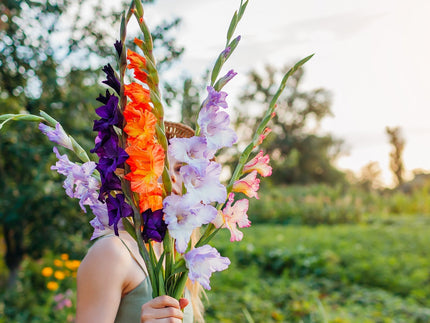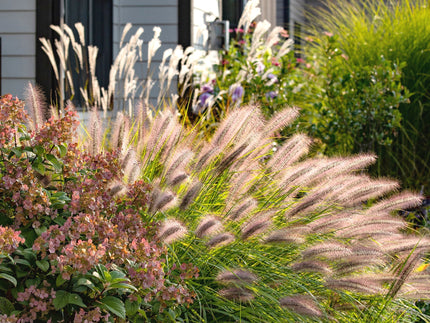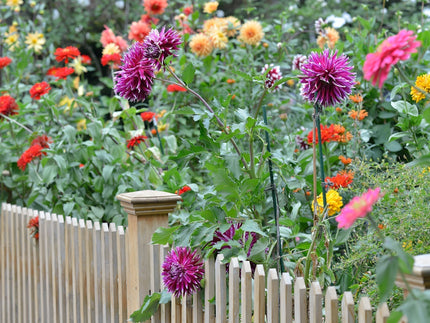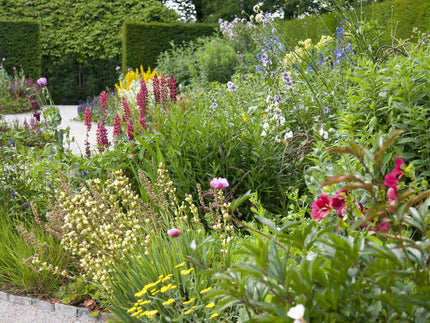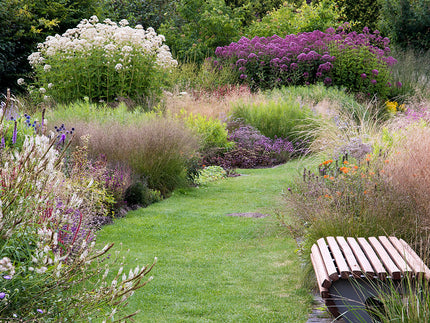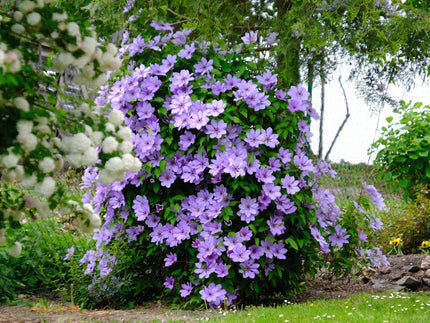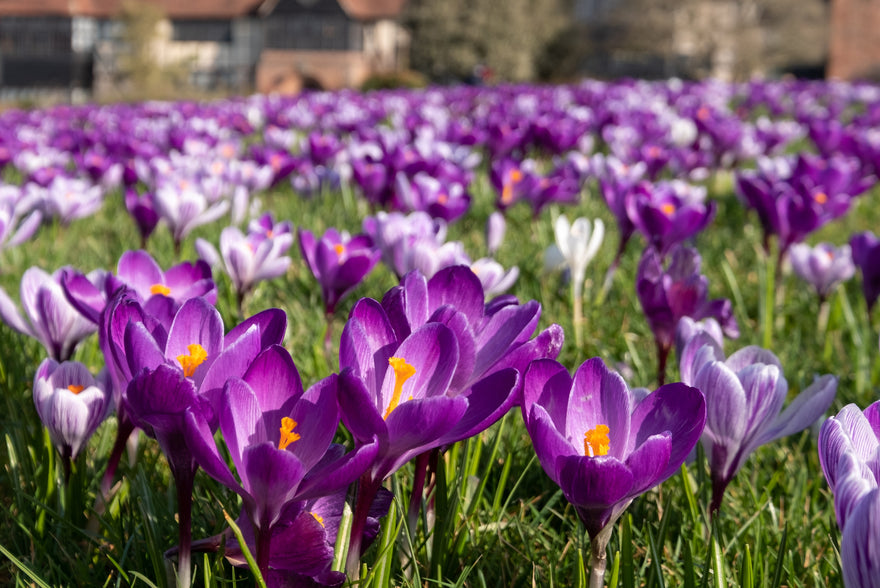
Guide to planting and naturalising flower bulbs in grass
Spring is an enchanting time of the year, heralded by the appearance of vibrant blooms peeking through the grass. Planting and naturalising spring bulbs in your UK lawn can transform a mundane yard into a dazzling meadow of colour and life. This guide will walk you through the essentials of planting and naturalising bulbs in grass, ensuring a stunning display year after year.
Why naturalise bulbs?
Naturalising bulbs means planting them in such a way that they appear spontaneous, as if nature intended them to be there all along. This approach has multiple benefits:
- Aesthetic appeal: A vibrant blanket of flowers offers a breath-taking view, especially when traditional borders and beds feel too structured;
- Low maintenance: Once established, naturalised bulbs require minimal care. They will come back each year, often multiplying in number;
- Wildlife friendly: These naturalised areas can support a diverse range of local wildlife, providing food and shelter for insects and small animals.
Choosing the right bulbs
When it comes to naturalising bulbs in grass in the UK, not all bulbs are created equal. Some varieties adapt better to the competition for nutrients and light. Here are a few excellent choices:
- Daffodils (Narcissus bulbs): Robust and low maintenance, daffodils are a classic choice for naturalising. They multiply rapidly, returning year after year with cheerful yellow or white blooms;
- Crocuses (Crocus bulbs): These early bloomers are perfect for adding pops of purple, yellow, and white to your lawn. Crocuses are among the first flowers to appear in spring, often when winter still lingers in the air;
- Snake's head fritillaries (Fritillaria meleagris): This polka-dotted beauty is admired in the plant world, coming up naturally every year without any need for lifting and storing bulbs;
- Snowdrops (Galanthus): Another early riser, snowdrops are smaller and less showy than daffodils but make up for it with their delicate, nodding white flowers;
- Bluebells (Hyacinthoides non-scripta): For a truly magical effect, bluebells are ideal. They thrive in dappled shade and are perfect for areas beneath trees;
- Camassias (Camassia bulbs): These bulbs are less common but excellent for naturalising. Their tall spires of blue or white flowers add height and drama to naturalised areas.
Preparing the lawn
Before you begin planting, it’s essential to prepare your lawn to ensure the bulbs have the best chance of thriving.
- Select the right location: Choose areas in your lawn where the grass is not too dense and receives ample sunlight or partial shade. Avoid overly shady spots, as most bulbs require a good amount of light to flower;
- Mowing: Stop mowing the chosen area in late summer to allow the grass to grow longer and create a suitable environment for planting. Long grass helps protect newly planted bulbs and keeps the soil moist.

Planting flower bulbs
Planting bulbs in grass is slightly different from traditional garden bed planting. Follow these steps for successful naturalisation:
- Randomly scatter: For a natural look, scatter the bulbs randomly across the selected area. Avoid planting in neat rows or patterns;
- Planting depth: Ensure you plant bulbs at the correct depth. A general rule of thumb is to plant them three times their depth. For instance, if a bulb is 2 inches tall, plant it 6 inches deep;
- Use a bulb planter: A bulb planter or an auger attached to a drill can make planting easier. Make holes at the required depth and place the bulbs with the pointed end facing upwards;
- Cover and water: Fill the holes with soil, gently firming it down. Water the area thoroughly to settle the soil around the bulbs and kickstart the rooting process.
Caring for your naturalised bulbs
Once planted, naturalised bulbs in grass are relatively low maintenance. However, there are a few key care tips to ensure they flourish year after year:
- Minimal mowing: Allow the foliage of the bulbs to die back naturally before you begin mowing again, usually about 6-8 weeks after flowering. This period allows the bulbs to store energy for the next bloom cycle;
- Feeding: Fertilise sparingly. A light application of a balanced fertiliser in early autumn can be beneficial, but avoid over-feeding as it can lead to lush foliage at the expense of flowers;
- Weeding: Keep the area relatively free of weeds, especially in the first year of planting. Weeds can compete with the bulbs for nutrients and water;
- Dividing and spreading: Over time, some bulbs may become crowded. Every 3-5 years, lift and divide clumps if you notice reduced flowering. Replant the divided bulbs immediately to promote spreading and continued flowering.

Enjoying the benefits
One of the most rewarding aspects of planting and naturalising bulbs in grass is the minimal intervention needed once the blooms are established. Year after year, you’ll enjoy a vibrant and ever-expanding carpet of flowers. The delight of seeing the first shoots emerging in spring is unmatched, offering a clear signal that warmer, brighter days are on their way.
Summary
Naturalising bulbs in grass is a simple, fulfilling gardening project that brings profound rewards. By selecting the right flower bulbs, preparing your lawn adequately, and following best practices for planting and care, you will create a stunning display of colour that returns without fail every year. Whether you opt for daffodils, crocuses, fritillaries, snowdrops, bluebells, or camassias, these efforts will yield a delightful, naturalised UK garden that is both attractive and beneficial to the local ecosystem.
So, get your tools ready, choose your favourite bulbs, and transform your lawn into a vibrant springtime spectacle. By embracing the beauty of naturalised bulbs, you'll enhance not only the aesthetics of your garden but also foster a haven for wildlife, thereby contributing to a richer, more diverse environment.

































































































































































































